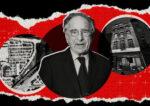Trending
Editor’s note: Life under Mayor Bill

Talk about a real estate upgrade. When Bill de Blasio is handed the keys to Gracie Mansion — which seems likely given the latest polls — it will be a major step up from his Park Slope home, where he shares a single bathroom with his family (see “Going to Gracie-land”).
But let’s face it, it will also mean a less friendly tenant in City Hall for New York’s real estate industry. When it comes to taxes, zoning, landmarking and other key issues, Mayor Bill will differ a lot from Mayor Mike.
If de Blasio is elected, it may make the city more progressive, or it may move the city backwards, erasing the legacies of Mayors Giuliani and Bloomberg, and leaving us in some David Dinkins–era purgatory.
Time will tell. Hopefully a de Blasio administration will strike the right balance of moving the city forward in some key social areas, but not abandoning the economic progress made during the last two decades.
The race, in which de Blasio is facing off against Republican Joe Lhota, a former deputy mayor to Giuliani, raises some big political questions.
Should New York be a place where the wealthy are entitled to an outsized piece of the spoils in exchange for fueling the city’s economic engine? Or should things be divided up more equally (with the wealthy paying higher taxes to subsidize more new programs)?
Or rather — what I think is the case — is the de Blasio premise of a “tale of two cities” itself a false dichotomy? Surely, from Brownsville to Beekman Place, life is better across the board here than it was 20 years ago.
De Blasio wouldn’t be the first politician to hone in on (or exploit) socioeconomic differences to get elected.
Yes, the election serves as a necessary and useful debate about the state of the city. And yes, the city is expensive, as it’s always been.
But did Bloomberg really open up the kind of fissures that de Blasio claims he did?
On the real estate front, de Blasio — who as public advocate created a “Worst Landlord Watch List” — has been critical of market-rate development, telling The Real Deal that “towering, glitzy buildings marketed to the global elite is not the type of development New Yorkers are looking for.”
But that comment misses the mark. One just needs to read this issue to get that.
In “Development kings head for Queens,” we look at the rise in new residential development in Queens. Many Manhattan builders are now erecting their first Queens projects, taking advantage of the cheaper land prices there than in Manhattan and Brooklyn. The units, too, will also be less expensive, and will serve, for example, college graduates that are priced out of the other boroughs. Isn’t that how it’s supposed to work with supply and demand?
In another story, we look at the biggest U.S. development projects, a list that’s topped by the World Trade Center site (see “Tallying the biggest new buildings in the U.S.”). De Blasio has criticized public-private partnerships as too often giving away the store, but it’s hard to see the negatives here.
And isn’t it a positive that London’s most successful developers, the Candy brothers (who we cover in “Candy Land”), are looking to build here? If the Candys develop a high-end project that attracts more foreign money, isn’t that good for everyone?
Building pricey projects isn’t mutually exclusive from pursuing big affordable housing initiatives (like those undertaken by the Bloomberg administration).
Furthermore, there are the entrepreneurs who are transforming the real estate industry too, bringing transparency to how property is bought and sold (see “The industry’s hot new entrepreneurs”).
And some of New York’s real estate dynasties are shining examples of what private developers can do. In our cover story, we look at what they own and what they’re developing today (see “NYC’s real estate dynasties”). The Dursts, for example, led the charge in redeveloping Times Square, are co-developing One World Trade Center and lured Condé Nast Downtown. They’re also at the forefront of green building.
While there are absentee landlords and real estate players who don’t take care of their buildings — those “worst landlords” that de Blasio has singled out — most developers are about investing in the city and creating value, which is a positive for everyone.
It’s important for de Blasio — who seems to miss the fact that overall growth in the city will help everyone — to understand the distinction if he’s elected as the next mayor.




